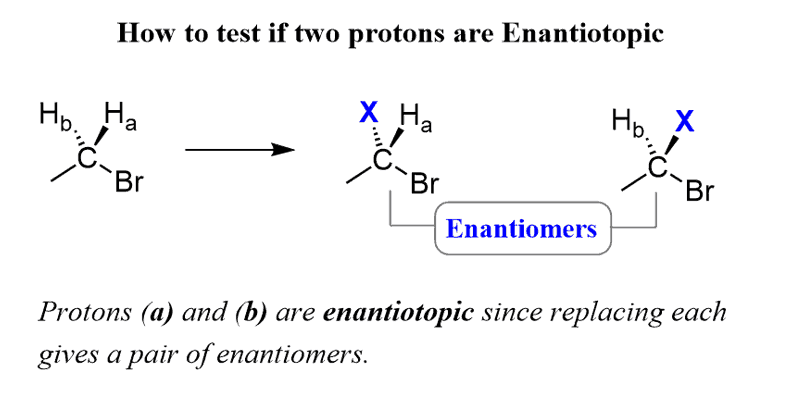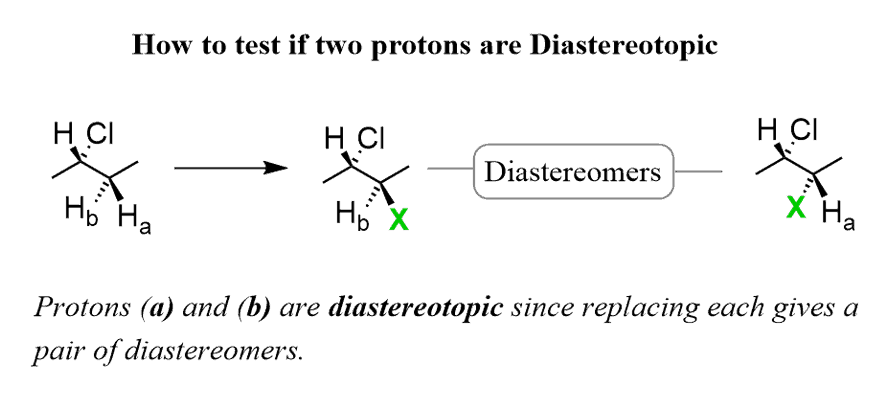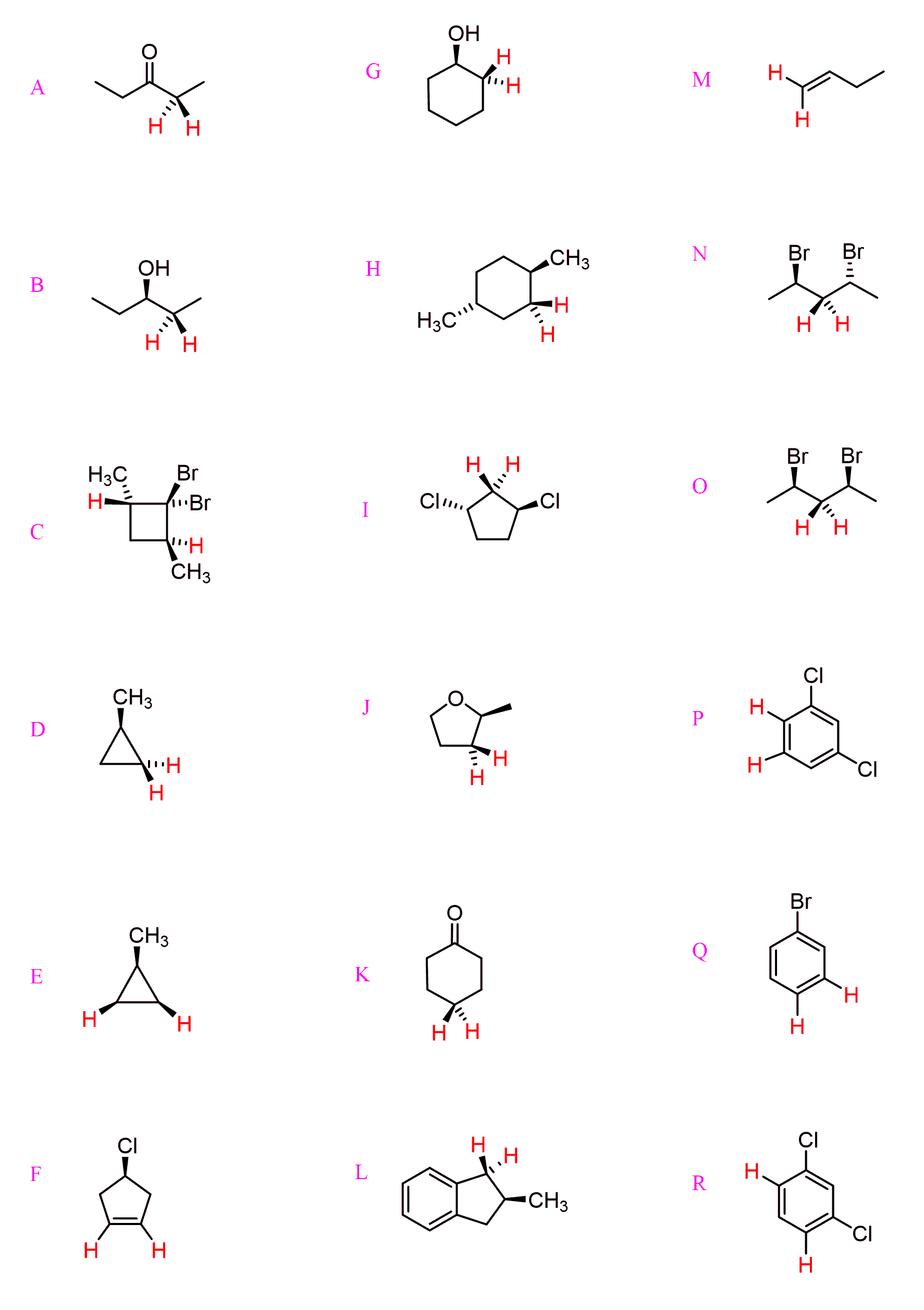In the previous post we talked about homotopic, enantiotopic, diastereotopic and constitutionally heterotopic protons.
In short, these are all about whether a set of protons is in the same environment or not, and for the NMR purposes, it helps us determine the number of signals we should expect for a given molecule.
Read this article for more details if you need to and if you are ready, scroll down and work on these problems.
Remember, you have two methods for determining whether the protons are homotopic, enantiotopic, diastereotopic and constitutionally heterotopic;
First, and probably, the easier/faster method is the check of symmetry elements according to this flowchart:

Again, for more details check the post mentioned earlier.
The second method is used if you are in doubt about the symmetry or its absence in the molecule. And this is the method of replacing the hydrogens with another element.
If replacing two protons with a different group (X) gives the same compound, the protons are called Homotopic.

If replacing two protons with a different group (X) gives a pair of enantiomers, the protons are called Enantiotopic.

If replacing two protons with a different group (X) gives a pair of diastereomers, the protons are called Diastereotopic.

And if replacing two protons gives two constitutional isomers, the protons are said to be constitutionally heterotopic or simply heterotopic protons:


